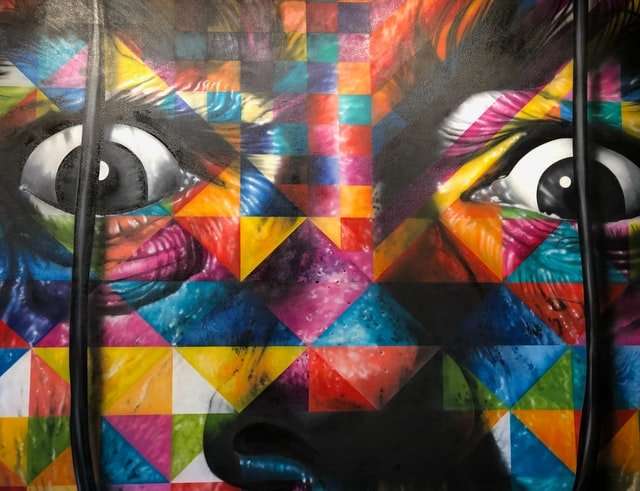There are a lot of different mandala shapes and patterns. The four-petalled flower is more common than the five-petalled one with a ring around it. There is a six-petalled flower, also with a ring. A lot of mandalas have a center of an image like a yin-yang symbol or an eye like the one in the middle of the word “om” in Indian religions. Many mandalas include geometric shapes like circles and squares or triangles. Some have animal shapes, or people, or even plants in them.
Tibetan symbols are all over mandalas and their meaning, too. For example, the eight-spoked wheel is one symbol that is often used in Tibetan art. It represents spiritual healing and strength.
The most common mandala shape for Tibetan art is the three-dimensional cube with one face open to show a deity’s image inside (like Brahma in Hinduism). This shape represents enlightenment and wisdom.
Many people who do art therapy use these types of designs to help patients deal with stress and other problems by meditating on them as they draw them.
See also: Mandala Patterns & Meanings: Flower Mandalas
Mandala is the Sanskrit word for circle. Mandalas are sacred art forms used in meditation. They are made up of a circle, a square and a center point. Each one has a specific meaning and all mandalas have an entire symbolic language of their own that can be understood by those who know how to interpret them.
Tibetan Buddhists believe that everything in the universe forms a mandala – it’s just that most people don’t recognize them as such.
The construction of these symbols is usually started with drawing the central circle of the design, which symbolizes the Universe. Within this circle are arranged the other geometric shapes present in the mandala. These shapes represent different aspects of life and they can also be divided into two categories: static and dynamic. The static shapes represent elements that are unchanging or permanent, while the dynamic ones are associated with change or impermanence. In some cases, there is also an element of divinity present within a mandala design, which is represented by using triangles, circles with lines going through them and squares with dots in their center.
The great thing about mandala designs is that since each symbol has its own meaning, it doesn’t really matter if you use colors or not when you draw one –
Mandala art is one of the best ways to not just decorate your home, but also to create a spiritual and positive atmosphere in it. They are great for meditation and relaxation, by creating a feeling of tranquility and peace. We can find a lot of mandala art on the internet, but what is important to remember is that some of them can be used as wallpaper for your computer or phone. I’m sure that you already have one favorite mandala, but today I’d like to offer you a collection. Enjoy!
Mandala symbols are the expressions of spiritual forces, which can help us with our wellbeing and provide us with a source of inspiration. Each color used in making mandala has different meanings. Let’s look at the meaning of each mandala symbol and their significance in our life.
Color Symbol Meaning In Our Life
White Represents wisdom, purity, innocence, and wholeness. Peace and happiness are also associated with this color. It represents universal love and unity among people.
Black Symbolizes mystery, power and strength. Darker shades of this color represent death, mourning and evil.
Red Represents physical life, energy and sexuality. It brings excitement to your life that you need for growth and progress. It is also the color of passion, courage, desire and war. This color is connected with love as well as anger and hate.
Yellow Represents intellect, joy, confidence and communication skills. It represents self-esteem and recognition in society as well as social status. This color symbolizes enlightenment too.
Green Represents harmony, balance, fertility or prosperity. It also stands for nature’s gifts such as beauty of the earth, sea etc., fertility or money earned through hard work or inheritance received from parents or ancestors etc., although it may sometimes represent
The word mandala (Sanskrit for “circle”) is used to refer to a spiritual and ritual symbol in Indian religions and also in the modern psychological sense.
The earliest known mandalas were painted in the caves of Lascaux, France, around 15,000 BC. Mandalas are found in the art of many cultures and across religious traditions. They share a circular pattern that represents wholeness or unity. An individual mandala may be referred to as a mandala; however, many mandalas are not individual works but are often part of an iconographic scheme. The holgram “mandala” represents an entire environment.
Tibetan Buddhist Tanka paintings are often based on Mandalas, while the intricate designs of Islamic mosques are often referred to as Mandalas.
Mandalas have been used for centuries by Hindus and Buddhists as part of their spiritual practices. In Hinduism and Buddhism, mandalas are typically used as an aid to meditation and trance induction. In Tibetan Buddhism, Dzogchen practitioners incorporate the use of tantric ornaments called Thigle for protection from all mental states and stimulation during a meditation practice called Ngondro. The Thigle make use of the five Buddha families: rat
Mandalas are created for many reasons, but the most common is for healing. They help us take an outward journey to heal ourselves. The repetition of creating the same pattern over and over again soothes the mind and opens the body to accepting and releasing old energy that no longer serves you.
Tibetan Buddhists believe that mandalas bring peace to the soul and help eliminate destructive emotions such as greed, anger, jealousy, and fear.
Healing with Mandalas has been used in religious ceremonies for thousands of years as well as by Native Americans.
Mandalas are also believed to be a bridge between Heaven and Earth, through which one may communicate with God or one’s Angels. Creating a mandala is a way of centering your thoughts on what you desire to manifest in your life. Once complete, you can meditate on it to bring your desires into reality.*
How to use Mandalas:
Use mandalas as a tool for meditation by taking an inward journey into yourself by repeating patterns until you reach a calm space within yourself where all thoughts quiet down. In this space you can enter into a dialogue with your higher power or create your own energy field of protection or even just relax.”**



